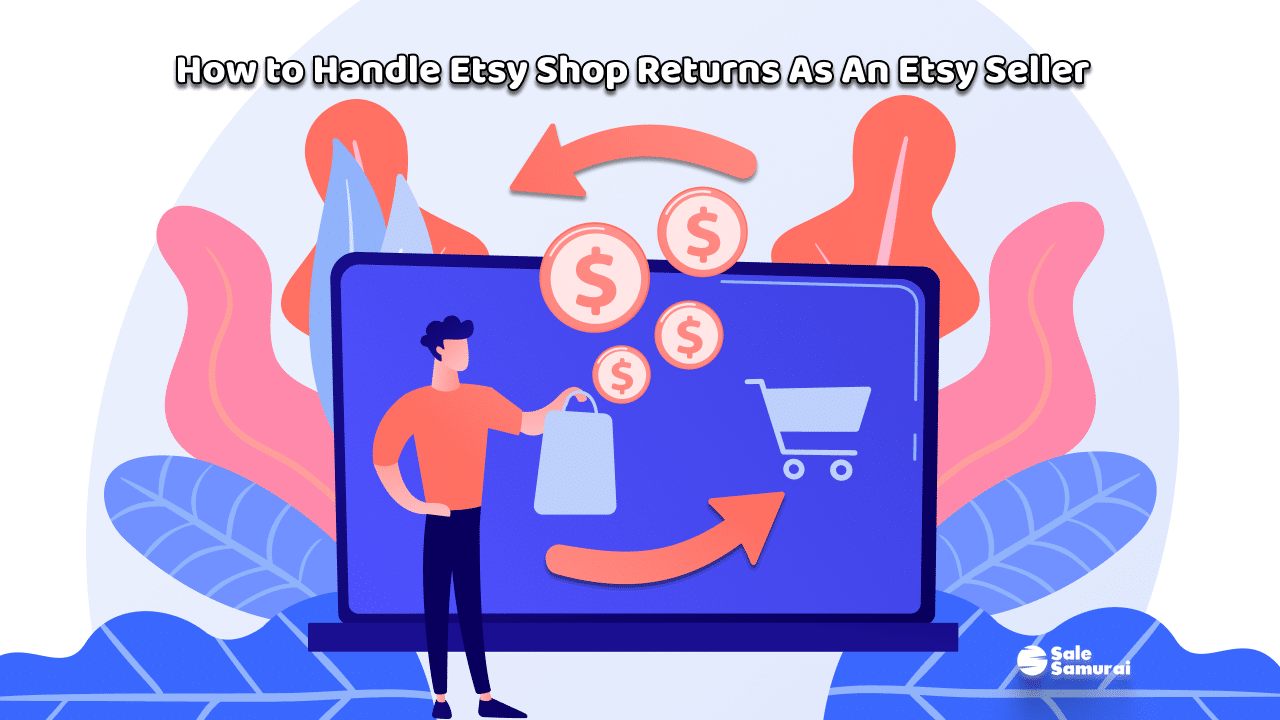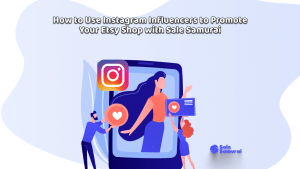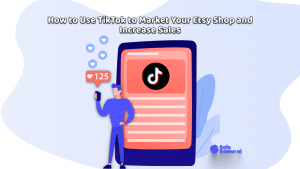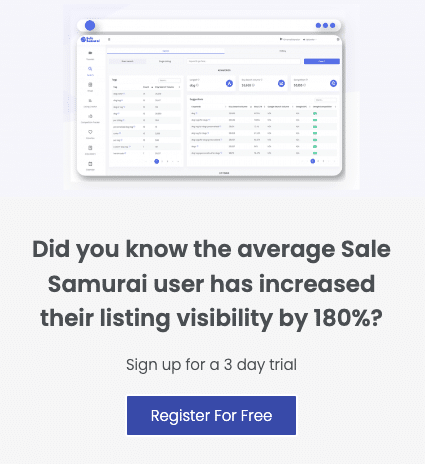
Your customers are going to attempt a return on your Etsy listings at some point so it’s best to be prepared.
The best way to handle Etsy shop returns is to go by your policies and make exceptions here and there to best maintain customer satisfaction for positive reviews and return customers.
Returns and exchanges are never fun but it’s pretty much guaranteed if you sell anything online. Read below to find out how you can use Etsy shop returns as an Etsy seller to your advantage and how to set them up in the first place.
Turning Returns Into An Opportunity
Whenever sellers hear the word “return” they immediately have an adverse reaction.
This is understandable, especially on Etsy where many items are customized or handmade.
The truth is, not only will returns happen at some point, so you should be prepared for them, but they can actually benefit your Etsy business.
Returns are a fantastic opportunity to maintain and increase customer satisfaction and understand how you can improve your product.
If a customer has already purchased from you they are well within their right to leave you feedback under your listing.
Having positive reviews on your Etsy listing is one of the best ways to grow your shop!
Denying a return, even when the reason or timing is outside of your return policy could lead to a bad review.
Sure if a customer threatens you with a bad review you could make a case to Etsy and maybe have it removed, that’s a big maybe, many customers might not even tell you what their intentions are.
So if it’s reasonable enough, consider going along with a return to maintain your customer satisfaction score.
More importantly, returns provide you with a fantastic opportunity to understand exactly what went wrong with the order, delivery, or product.
In the long term, this will help strengthen your offer, deliverability, and product quality.
It’s basically feedback!
Look at returns like your advertising budget – it’s necessary for growth.
How To Handle Return
There are 3 main ways that you can handle returns.
- Let Customers Handle It With Shipping
- Send a Return Label To The Customer
- Send Customer a Pay-On-Use Return Label
Let’s go over these quickly.
1. Customers Handle Everything
If you don’t want to go through the hassle of a return you can just let your customers deal with the whole thing.
Notify your customer they are responsible for the entire return.
Tell them your address and let them figure out the rest.
Once you receive the return and everything is in order you can issue a refund.
- Pros: Basically requires no work from you.
- Cons: Too much of a hassle for the customer. Not common practice and almost guarantees customers will never buy anything from you again.
2. Email Return Label
In this case, customers will ask for a return and once approved you can create a PDF Return Label (usually using the initial delivery method – USPS, UPS, FedEx, etc…).
Customers can then download and print the label, attach it to a mailer, and send the package back to you.
Once again if everything is in order you can issue the refund.
- Pros: Most of the difficulty is removed from the customer with printable return labels.
- Cons: The customer still has to pay for the shipping when they take the package to the postal service.
3. Pay On Use Return Labels
Pay-on-use return labels are very similar to the previous option with a small but significant difference.
In this case, the PDF you send to your customer doesn’t require him or her to pay anything when dropping off the package at the postal service.
Instead, once the label is scanned it will automatically go through and charge you at that point.
In other words, the label is Pay On Use.
Many brands actually include a pay-on-use return label with every order just in case.
- Pros: The ideal customer experience when it comes to returns.
- Cons: You pay for shipping which further eats into your profit margin and bottom line.
Setting Up Return Policies On Listings
Etsy actually doesn’t require your shop to accept returns but it does require you to have a return policy.
You have the option to create your own or choose from one of the popular and existing Etsy return policy templates.
To create a return policy:
- Go to “Shop Manager”, click on “Settings”, then choose “Policy Settings”
- Find where it says Return and Exchanges then click on the “Create Policy” button
- You will then need to select whether or not you accept returns and exchanges by putting a checkmark next to the option.
- Outline the time frame for returns using the dropdown menu.
- “Save and Apply” then click “Publish” to finish.
You can apply the same policy to multiple listings at once.
Keep in mind that you can change return policies or cancel them but once a policy has been created it cannot apply to any active listing if you wish to cancel it.
Etsy’s simple return policy is a great template to go with and it covers the following:
- Returns and exchanges are allowed on the item.
- Customers have 30 days after delivery to make the return.
- Shipping costs are covered by the customers.
- Customers are responsible for loss of value of items when not in their original condition. (This would have to be agreed upon in advance with you the seller.)
It’s as simple as that!
Overall, having a good return policy and bending the rules now and then may actually be a great opportunity for your Etsy business if you go with a case-by-case basis.
For information on how to grow your Etsy business reach out to us today! Our all-in-one Etsy SEO tool will help you:
- Identify relevant keywords
- Find trending keywords with low competition
- Optimize your listing





